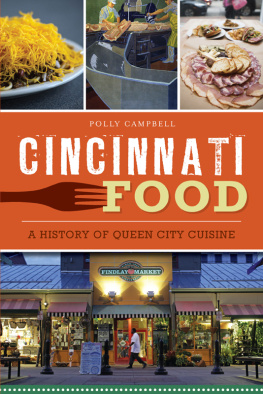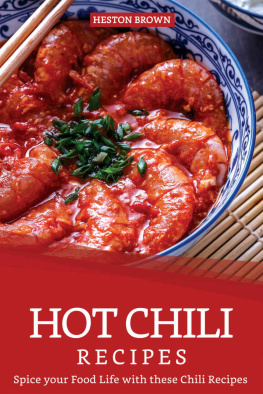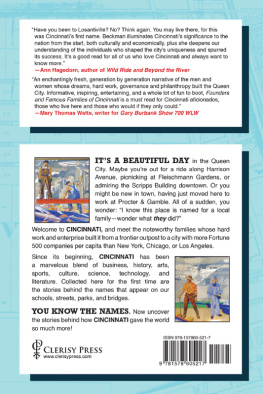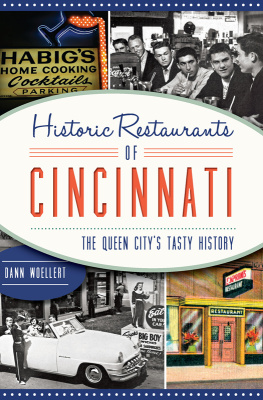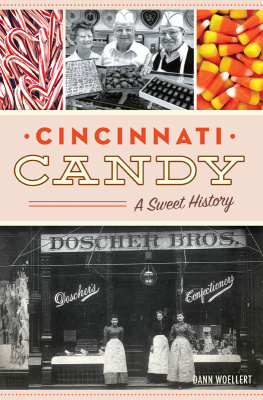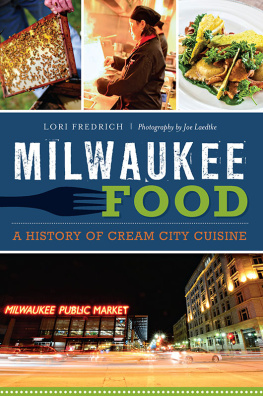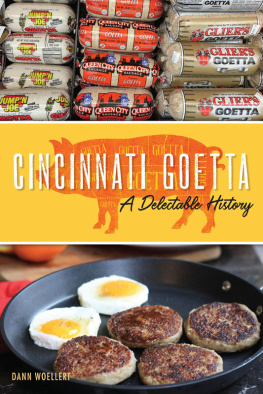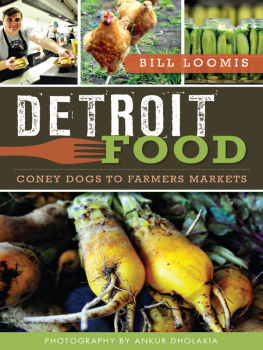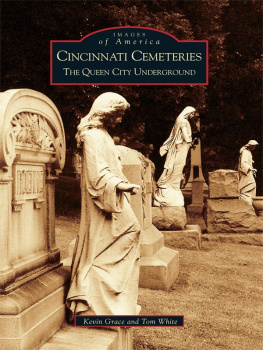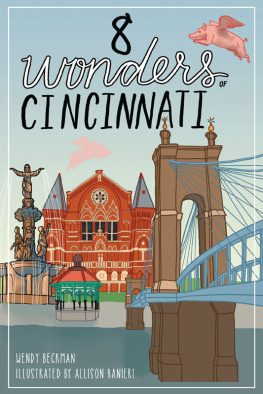

Published by American Palate
A Division of The History Press
Charleston, SC
www.historypress.com
Copyright 2020 by Polly Campbell
All rights reserved
A charcuterie plate from Panino, a now-closed restaurant in Over-the-Rhine. Photograph by the author.
First published 2020
E-Book edition 2020
ISBN 978.1.4396.7131.3
Library of Congress Control Number: 2020934425
Print Edition ISBN 978.1.4671.4152.9
Notice: The information in this book is true and complete to the best of our knowledge. It is offered without guarantee on the part of the author or The History Press. The author and The History Press disclaim all liability in connection with the use of this book.
All rights reserved. No part of this book may be reproduced or transmitted in any form whatsoever without prior written permission from the publisher except in the case of brief quotations embodied in critical articles and reviews.
CONTENTS
ACKNOWLEDGEMENTS
I have to thank my keen-eyed husband, Neil Sharrow, for proofreading and for eating all over Cincinnati with me for the last twenty-five years. And thanks to Ral Arias and to all of the wonderful photographers at the Cincinnati Enquirer, whose photographs I was lucky to be able to include in this book.
INTRODUCTION
Cincinnati surprises people. People who havent been here often assume its an uninteresting Midwestern city, bland and conservative, with a weird name. But Cincinnati has depths. It has plenty of quirks. And mostly, it has history. The Ohio River, which moves in a graceful crescent, separating downtown Cincinnati from its historic Northern Kentucky neighbors, tells a story of settlement and western expansion. The blocks of brick rowhouses with ornate cornices and German inscriptions in a neighborhood called Over-the-Rhine tell of German immigration, while imposing public buildings, like City Hall and Music Hall, tell of the prosperity that came from meatpacking and soap-making and of the civic-mindedness of the citys citizens. The food that is unique in Cincinnatiits sausages and chilihas history, too.
Cincinnati is not my hometownI moved here in the 1980sbut Ive been discovering the food history of my new city since I was lucky enough to be hired by the Cincinnati Enquirer as a restaurant and food writer in 1996. At that time, Cincinnati was pretty conservative, politically and culturally, and it was somewhat complacent (if you can characterize an entire city that way). Of course, there were always innovative people who made waves and changes, both good and bad. But things had been settled for a long time. Cincinnati peaked early, as it was the first real city of the West. It dazzled in the first part of the nineteenth century, but after the Civil War, other cities took over, attracted immigrants and made forward-looking decisions. Of course, changes happened here along with the rest of the country through the twentieth century (like the building of interstates, industrialization, suburban growth, racial reckonings, civic tragedies, et cetera). Our diet changed along with everyone elses, too, moving toward convenience foods and chain restaurants, national brands and food imported from farther and farther away.
But during this long period of slow change, Cincinnati hung onto certain things to eat that were unique to this city. Regional foods were dying everywhere, but our population held onto certain foods and brands that were eaten here as a matter of habitunremarked on and not marketed to the rest of the world. We went to neighborhood butchers and bakers, ate our German-inspired meats and drank our local beer.
Throughout my time at the Enquirer, so much has happened in food and dining in Cincinnati, just as it has across the country. People started eating out more and restaurants became better, not just in fine dining, but at all levels of price and formality. An enthusiasm for local food grew. Television got people interested in regional differences and unusual places to eat. The food scene here got interesting and more varied.
Cincinnati was obviously not alone in this steady growth of food innovation, nor was it a leaderthe city was doing it its own way. I noticed that many of the best ideas were inspired by the citys history. Old institutions, like butchers, ice cream shops and the historic public market, had been around forever, stubbornly doing their thing for years, and they began to flourish under this new attention. And what seemed newfarmers markets, beer, cocktailswere inspired by history. In a place with as much history as Cincinnati, thats a lot of inspiration.
Today, eateries in Cincinnati can be as modern and bland as chain restaurants that could be anywhere, as contemporary as gastronomic food tasting menus, as innovative as ranching fish for caviar (see ), as traditional as sauerbraten in a diner or as mixed up and fun as eating gourmet hot dogs made by a traditional butcher in a restaurant on a street that was once the scene of nineteenth-century revelry.
This book tells the story of Cincinnatis traditional beloved things and food that have lasted through both change and complacency. It also tells the stories of people who wanted to do something new and take their cue from history. I dont claim to tell the entire history of Cincinnati food in this book or take a deep dive into each topic; I only concentrated on the foods and the places that are still with us or that inspired the food we eat today. Im writing this introduction in the middle of the 2020 coronavirus crisis, and the future of our food history is not at all clear. Surely, though, the special flavor of Cincinnati will endure.
ARNOLDS BAR AND GRILL
Having a Drink with History
Lets start this look at Cincinnatis food history in a place where anyone can sit with a glass of beer and a pretzel and feel transported to a couple of different points in our history. At Arnolds Bar and Grill on Eighth Street in downtown Cincinnati, the oldest eating and drinking establishment in town, its easy to imagine its original era and the eras in which its original history was brought back to life. Arnolds is one of Cincinnatis most beloved spots, and there is history in every corner.
For many people, the television show WKRP in Cincinnati is the first thing to come to mind on hearing the citys name (although, since it went off the air more than thirty years ago, fewer people recognize it today than they have in the past). Twenty-nine years later, Cincinnati was, once again, the setting for a television show called Harrys Law. The show lasted for two seasons, between 2011 and 2012. Kathy Bates played a lawyer whose office was in a shoe store. For the second season, the producers wanted to work more of Cincinnati into the show and started having Batess character spend more time at a bar called Arnolds. The shows bar was modeled after the real Arnolds in Cincinnati. The set designers reproduced Arnolds special look and feeling, with its historic features, worn linoleum and old prints, photographs and beer advertisements. Its the sort of bar that doesnt exist much anymore, but almost everyone recognizes it as a gem.
I wrote about Arnolds in 2011, when the bar turned 150 years old. Ronda Breeden owned it then. We walked up the stairs and noticed the deep grooves in the center of each wooden step. They reminded her of all who came before. I think about everyone whos owned this place and the kind of heart they had to have, she said. They made it through some hard times. The bar has had hard times from its beginning. Simon Arnold opened it as a saloon in 1861, the same year the Civil War started. (If youre imagining historic eras, think of celebrating the end of that national nightmare at this Cincinnati bar with a beer.) The city was mostly confined to the basin between the Ohio River and the Vine Street Hill, and Germans had begun swelling the population. There is no doubt that many of Arnolds patrons were German, standing (never sitting) at the bar, one foot on the brass rail.
Next page
